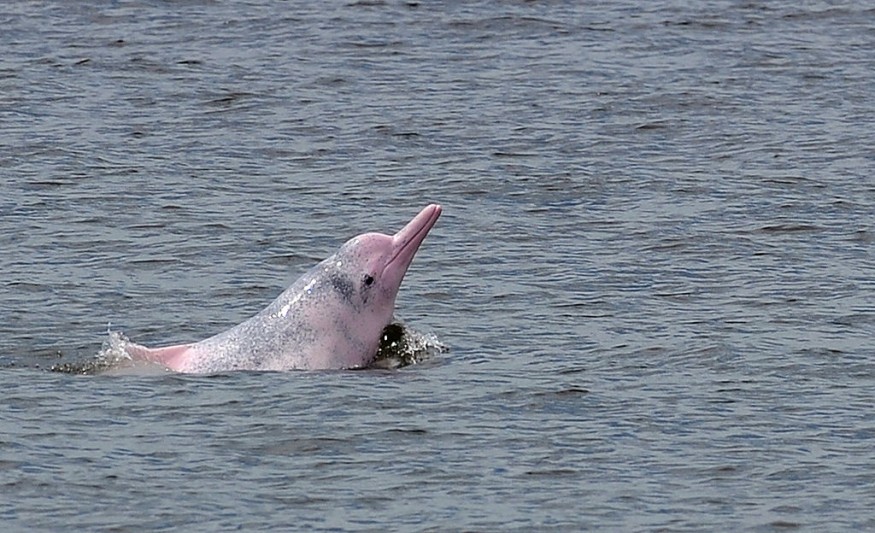
The perils of overfishing and the construction of infrastructure like dams pose a threat to the Amazon's population of threatened pink dolphins.
Overfishing and Infrastructure
According to a recent study, overfishing, dam development, and dredging techniques pose serious hazards to dolphins in the Amazon River. Experts on cetaceans used satellites to follow eight dolphins as they normally navigated the Peruvian Amazon River. Although dolphins typically have a swimming range of over 31 miles, the researchers discovered that 89% of that range was affected by either construction or fishing techniques.
Dr. Elizabeth Campbell, a co-author of the new study and director of the Centre for Ecology and Conservation at Exeter University's Penryn Campus in Cornwall, emphasized the human component of the hazards in a press release that accompanied the findings.
According to Campbell, human dangers to dolphins in the Amazon River are growing. The populations of the dolphins' prey can become depleted due to fishing, and dolphins are also vulnerable to purposeful slaughter, bycatch, and unintentional catching. For the past 30 years, bycatch has been recognized as a threat to these dolphins, but actual data on the number of dolphins caught each year are lacking, Salon reports.
The study, done by Campbell and her team, was recently published in the journal Oryx.
Conservation
The Amazon River dolphin is a species listed aa threatened, according to the International Union for Conservation of Nature IUCN. This situation emphasizes how urgent it is to safeguard these special creatures from the mounting dangers they are subject to.
Numerous conservation measures are in progress to safeguard the dolphins of the Amazon River as a result of the urgency. The creation of protected areas, the implementation of stricter fishing laws, and the outlawing of dolphin killing on purpose are important initiatives.
A crucial component of these conservation initiatives is scientific study. As was previously noted, scientists are studying dolphins using satellite tracking technology.
They keep an eye on behavior, nutrition, and breeding patterns. For creating efficient protection plans and influencing governmental decisions, this information is essential, according to Earth.com.
Also Read : Faroe Islands Hunt 'Grindadráp' Continues with Bloody Shores from Over 500 Dolphins Slaughtered
Pink Dolphins in Amazon
The pink river dolphin, also called the boto, exclusively resides in freshwater environments, particularly within the Amazon River. In large portions of Bolivia, Colombia, Ecuador, Brazil, Guyana, Peru, and Venezuela's Amazon and Orinoco river basins, are some known habitats.
The pink river dolphin boasts a sizable population in the tens of thousands, making it a prevalent cetacean species. It is yet categorized as vulnerable in some regions because of dams that endanger and separate some populations as well as other dangers including poisoning of rivers and lakes.
The World Wildlife Fund claims that people frequently kill or hurt Amazon river dolphins when they try to drive them away because they are considered competitors for fish stocks that are in decline. River dolphins are frequently intentionally killed in the Brazilian and Colombian Amazon for use as bait in the "mota" catfish fishery, which assembles fish that fetch high prices in the city.
© 2025 NatureWorldNews.com All rights reserved. Do not reproduce without permission.





